Deposy NTA: Faster to Smart Products
Before the new year is over here is a tech update from Deposy.

Production processes of plastic parts evolve very rapidly. 10,000 plastic products (e.g. packaging) can be produced from one ton of plastic, depending on weight and type of plastic. Our conversations with plastic manufacturers revealed that Deposy’s introduction of a unique Product ID would have to keep pace with the speed of these production processes. This is the only way to ensure optimal collaboration between manufacturers and Deposy.
Producers provide the Deposy system with the necessary product information via TCP/IP connection as JSON data format. So far this is practicable for all parties. The data is assigned to the appropriate addresses by Deposy. This is where a blottleneck occurred: Waiting for confirmation of the previous transaction – before a new product can receive its product ID – takes far too long. This is especially true when using only one seed, as is necessary for the Deposy system. On the scale we’re aiming at, there naturally will be many manufacturers with different product ranges.
The Deposy team has been spending the past few weeks looking for a solution – and found it. We developed the Deposy NTA (Non Transactiontime Algorithm). This allows to generate product ID’s independent of transaction times. No further seeds are required. The big step forward is that the orders can be processed rapidly. This way huge amounts of Deposy Product ID’s can be generated in a very short time. This is necessary to successfully implement the Product ID in the Deposy project on an industrial scale. It also sets the course for implementing the Deposy system in a machine to machine economy. Individual machines will be able to process the order to create a Product ID themselves. The first stress tests went very well. Development on performance and bug fixes is in progress to complete the algorithm.
In the new year we have a number of upcoming challenges, such as the product ID, an artificial intelligence for QR-code / number recognition, the permanent code, prototype construction, an API for an exchange with our partners and much more. We set ourselves numerous goals for the year 2020 which we will dive into with the resolution “Continue with 100 %”!